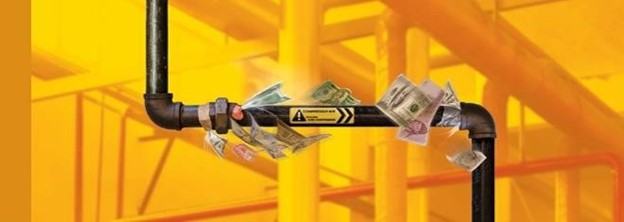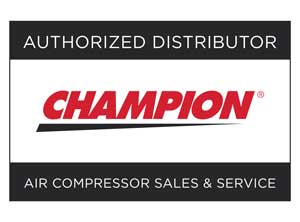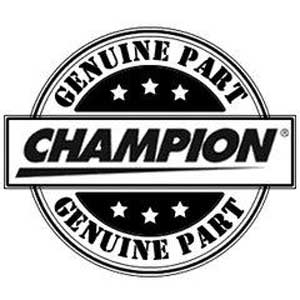Why It Is Important to Fix Your Compressed Air Leaks (Download this valuable PDF)

_____________________________________________________________________________
Potentially Inappropriate Uses of Compressed Air
Compressed air is clean, readily available, and simple to use.
As a result, compressed air is often chosen for applications for which other energy sources are more economical.
Inappropriate uses of compressed air include any application that can be done more effectively or more efficiently by a method other than compressed air.
Don't WASTE your Compressed Air. Check your facility for wasteful and perhaps even un-safe uses of compressed air.
Examples of potentially inappropriate uses of compressed air include:
• Open blowing
• Sparging
• Aspirating
• Atomizing
• Padding
• Dilute-phase transport
• Dense-phase transport
• Vacuum generation
• Personnel cooling
• Open hand-held blowguns or lances
• Diaphragm pumps
• Cabinet cooling
• Vacuum venturis.
Here's an explanation of each potential instance that causes an air compressor leak and a suggested alternative:
Open Blowing
Open blowing is using compressed air applied
with an open, unregulated tube, hose, or pipe for one
of these applications:
• Cooling
• Bearing cooling
• Drying
• Clean-up
• Draining compressed air lines
• Clearing jams on conveyors.
The alternatives to open blowing are vast. Some are:
• Brushes
• Brooms
• Dust collection systems
• Non-air-loss auto drains
• Blowers
• Blowers with knives
• Electric fans
• Electric barrel pumps
• Mixers
• Nozzles.
Sparging
Sparging is aerating, agitating, oxygenating, or percolating liquid with compressed air. This is a particularly inappropriate application because liquid can be wicked into a dry gas, increasing the dew point.
The lower the dew point of the compressed air, the more severe the wicking effect. This can occur with oil, caustics, water rinse materials, etc.
Alternatives to sparging include low-pressure blowers and mixers.
Aspirating
Aspirating is using compressed air to induce the
flow of another gas with compressed air such as flue
gas.
An alternative is a low-pressure blower.
Atomizing
Atomizing is the use of compressed air to disperse or deliver a liquid to a process as an aerosol. An example is atomizing fuel into a boiler. Fluctuating pressure can affect combustion efficiency.
An alternative is a low-pressure blower.
Padding
Padding is using compressed air to transport liquids and light solids. Air is dispensed over the material to be moved. The expansion of the air moves the material. The material is usually only moved short distances. An example is unloading tanks or tank cars.
Molecular diffusion and wicking are typical problems with padding.
An alternative is low- to medium pressure blowers.
Dilute-Phase Transport
Dilute-phase transport is used in transporting solids, such as powdery material, in a diluted format with compressed air. Molecular diffusion and wicking are typical problems with dilute phase transport.
An alternative is a low- or high-pressure blower or a lowpressure air compressor designed for 35 psig. The pressure required depends upon the moisture content and size of the material being transported.
Dense-Phase Transport
Dense-phase transport is used to transport solids in a batch format. This usually involves weighing a batch in a transport vessel, padding the vessel with compressed air, forcing the batch into a transport line, and moving it in an initial plug with a boost of compressed air at the beginning of the transport pipe. Once the material is moving in a plug, the operation may fluidize the material in a semi-dense or moderate dilute-phase using fluidizers or booster nozzles along the transport path. The material is typically transported to a holding vessel that dispenses it on an as-needed basis using pad air from the secondary transport vessel to move it to the use location. A typical application would be the dense-phase transport of carbon black.
There are typically four compressed air elements to the transport. These elements are control air for the equipment, pad air for the initial transporter, transport air to move it in the piping, and fluidizers or booster nozzles along the transport piping. Most dense-phase manufacturers specify 80 to 90 psig with one single line supporting the entire process. The control air and booster nozzles typically use pressures in the 60 to 70 psig range. The actual article psig required for the pad air and the transport air is typically 30 to 45 psig. Because of the lack of storage in most of these applications and the high-volume, short-cycle transport times, the original equipment manufacturers request 80 to 90 psig and use the entire supply system as the storage tank. As this usually has a negative impact on the plant air system, separate compressors, filters, and dryers are applied to this process at the elevated pressure.
Alternatives include supporting the control air, pad air, and boosters with regulated plant air plus metered storage, and using a two-stage, positivedisplacement blower (28 psig) or single-stage compressor (40 to 50 psig) for the transport air. Another alternative is to use metered storage for both the pad air and transport cycle. This necessitates providing the entire requirement from storage and metered recovery per cycle, with a metering adjustment to refill the vessel just before the next transport cycle. The storage should be sized to displace the required air first for the pad and then for the transport cycles within an allowable pressure drop to terminate the transport cycle pressure at the required article pressure. This will flatten the volumetric load on the system, eliminate any impact on other users, and reduce the peak energy required to support the process.
Vacuum Generation
The term vacuum generation describes applications where compressed air is used in conjunction with a venturi, eductor, or ejector to generate a negativepressure mass flow. Typical applications are hold-downs or 55-gallon, drum-mounted, compressed air vacuum cleaners. This is by far the most inefficient application in industry with less than 4 percent total efficiency, although for very intermittent use (less than 30 percent load factor), compressed air can be a reasonably efficient solution.
An alternative is a vacuum pump. If a compressed-air-generated vacuum is required, install a solenoid valve on the compressed air supply line to shut this application off when it is not needed. Vacuum generators are used throughout industry.
Some applications for vacuum generators include:
• Shop vacuums
• Drum pumps
• Palletizers
• Depalletizers
• Box makers
• Packaging equipment
• Automatic die-cutting equipment.
Vacuum generators are selected for safety, ease of installation, physical size of the generator, the fact that no electricity is required at the point-of-use, and low first cost. Vacuum generators are usually less economical to operate than central vacuum systems.
As a rule, in a base load situation, if the vacuum generator is operating less than 30 percent of the time, it will be more economical to operate than a central vacuum system. Otherwise, vacuum generators are, in general, less effective at pulling a vacuum and cost as much as five times more to operate than a dedicated vacuum pump. Using vacuum generators for shop vacuums and drum pumps, which are typically peak load applications, could cause another compressor to turn on and stay on until it times out. Having to operate a second compressor because of the added demand associated with a vacuum generator eliminates any apparent savings associated with a vacuum generator, even if it operates only once a day for a short period of time.
A dedicated vacuum pump, or the use of central vacuum system will provide more suction force at a fraction of the cost of vacuum produced by compressed air. In this case, it is significantly more cost effective to provide a system that is designed into the machine
from the beginning than to retrofit a piece of equipment. This can be accomplished by being proactive at the time the machine specifications are prepared and the purchase orders issued. Vacuum generators must be applied properly and only after taking life cycle costs into consideration.
Vacuum venturis are a common form for vacuum generation with compressed air systems. In a venturi system, compressed air is forced through a conical nozzle. Its velocity increases and a decrease in pressure occurs. This principle, discovered by 18th century physicist G. B. Venturi, can be used to generate vacuum without a single moving part.
Multi-stage venturi devices provide a more efficient ratio of vacuum flow to compressed air consumed than single-stage venturi devices. Where vacuum requirements vary significantly, or are cyclical with a duty cycle of less than 30 percent, multi-stage, venturi-type vacuum generators with pressure regulators and automatic shut-off controls on the compressed air supply may be more efficient than continuously operating mechanical-vacuum pump systems. These devices also can be equipped with a vacuum switch that signals a solenoid valve to shut off the air supply when a set vacuum level is attained, thus reducing air consumption in non-porous applications. They may also be suitable where it is impractical to have a central vacuum system, particularly where the uses may not be confined to one area.
Personnel Cooling
Personnel cooling is when operators direct compressed air onto themselves for ventilation. This is dangerous because it can shoot particulates into the skin. A 1/4-inch tube blowing air on an operator can
consume 15 to 25 brake horsepower (bhp) of compressed air.
An alternative is fractional horsepower fans of 1/4 bhp or less.
Open Hand-Held Blowguns or Lances
Unregulated hand-held blowing is not only a
violation of most health and safety codes, but is also
very dangerous. Hand-held blowguns that conform to
all occupational health and safety standards should be used.
There are different styles of blowguns that can
deliver various airflows, velocities, and concentrations.
The proper gun must be selected for each application.
Pipes installed in the end of hose and unregulated
non-approved guns must not be used. Blowguns must
have no more than 30 psig discharge nozzle pressure.
The nozzle should be constructed to relieve backpressure
if the nozzle is plugged or blocked. The blowgun must
also have a spring-operated throttle mechanism so it
shuts off automatically if it is dropped.
Diaphragm Pumps
A common error is to not size diaphragm pumps
for the maximum viscosity, highest pressure, and
highest volume required. The result is poor performance
and an increased supply pressure requirement.
Diaphragm pumps are commonly found installed
without regulators and speed control valves. Those
diaphragm pumps that are installed with regulators
are found with the regulators adjusted higher than
necessary. This is often because of undersized regulators
and supply piping or hose. The higher-than-necessary
setting of the regulator increases the demand on the
compressed air system and increases operating costs.
With a higher pressure setting, the amount of
compressed air admitted into the diaphragm chamber
is increased above that which is actually required to
move the product. The amount of product actually
transferred remains the same, but the amount of air
used increases with the increased pressure.
The regulator should be adjusted to equal the
maximum head that the pump is required to provide.
A flow control valve installed up stream of the regulator
will accomplish the required speed control. Operating
the diaphragm pump without speed control increases
the rate of compressed air consumption by increasing
the strokes per minute of the diaphragm pump. The
speed control should be adjusted to pump product in
the maximum allowable time. As a general rule, the
regulator and flow control valve are not included with
the standard pump package. Also, when the pump has
no liquid or slurry to pump, it will rapid cycle,
wearing out the diaphragm and leading to compressed
air waste. The pump controls must be configured
to turn the pump off when there is nothing to pump.
Cabinet Cooling
Cabinet cooling should not be confused with
panel purging. The following are typical applications
where cabinet cooling is found.
• Programmable controllers
• Line control cabinets
• Motor control centers
• Relay panels
• Numerical control systems
• Modular control centers
• Computer cabinets.
When first cost is the driving factor, open tubes,
air bars (copper tube with holes drilled long the length
of the tube) and vortex tube coolers are often used to
cool cabinets. When life-cycle costs are taken into
consideration, these choices prove to be expensive. It
is not uncommon to find an open tube or air bar
consuming 7-1/2 horsepower (hp) of compressed air to
cool a cabinet. Vortex tube coolers can be an improvement
over open tubes and air bars because they are
often cycled with a thermostat control, which reduces
air consumption. However, air to air, air to water and
refrigerated cabinet coolers are available that only use
1/3 hp to accomplish the same task.
Other Potentially Inappropriate Uses
Other improper uses of compressed air are
unregulated end uses and those that supply air to
abandoned equipment, both of which are described
below.
Unregulated End Uses
A pressure regulator is used to limit maximum enduse
pressure and is placed in the distribution system
just prior to the end use. If an end use operates without
a regulator, it uses full system pressure. This results in
increased system air demand and energy use, since the
end use is using air at this higher pressure. High
pressure levels can also increase equipment wear,
resulting in higher maintenance costs and shorter end
use equipment life.
Abandoned Equipment
Many plants undergo numerous equipment
configuration changes over time. In some cases, plant
equipment is no longer used. Air flow to this unused
equipment should be stopped, preferably as far back in
the distribution system as possible without affecting
operating equipment.
Using Compressed Air
As a general rule, compressed air should only be
used if safety enhancements, significant productivity
gains, or labor reductions will result. Typical overall
efficiency is 10 to 15 percent. If compressed air is used
for an application, the amount of air used should be
the minimum necessary quantity and pressure and
should be used for the shortest possible duration.
Compressed air use should also be constantly monitored and re-evaluated.

